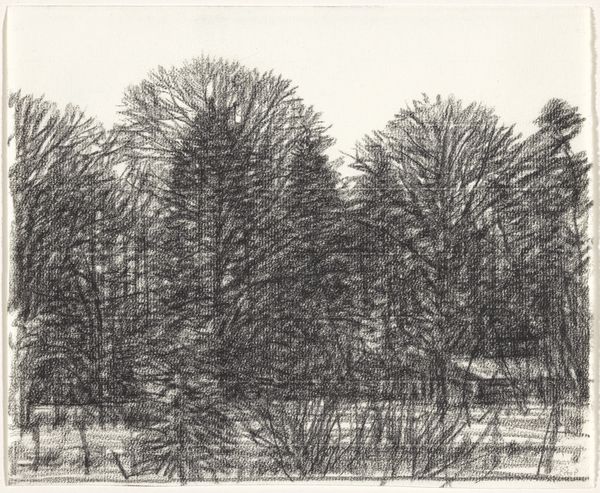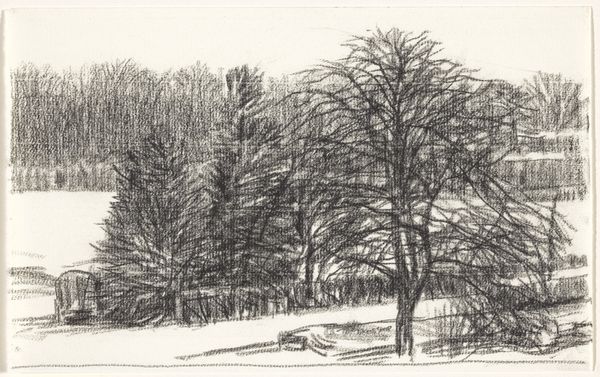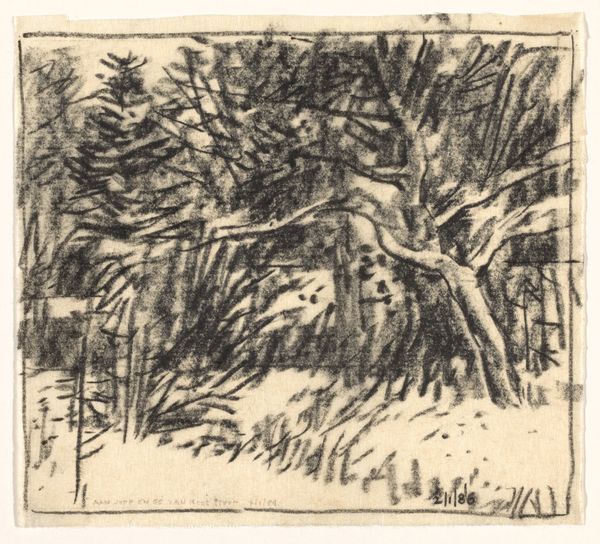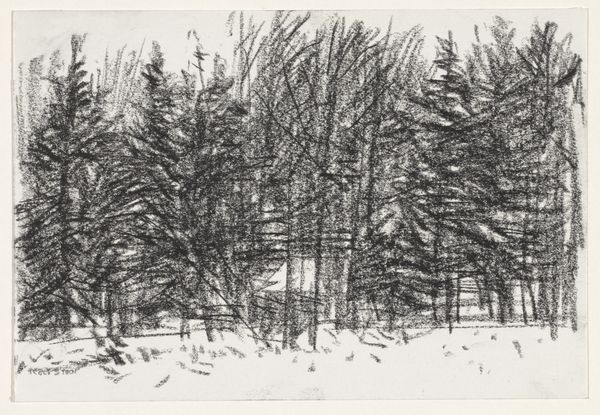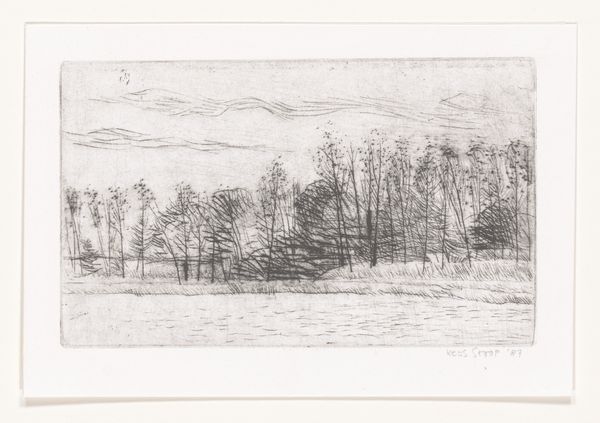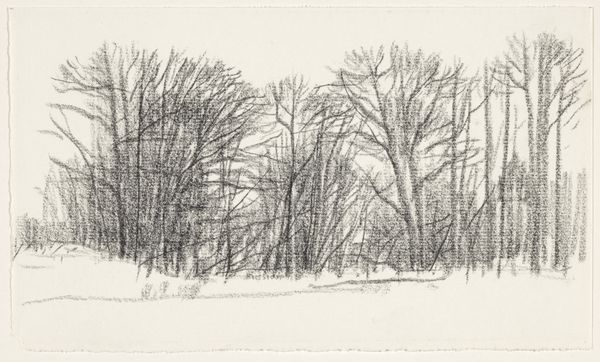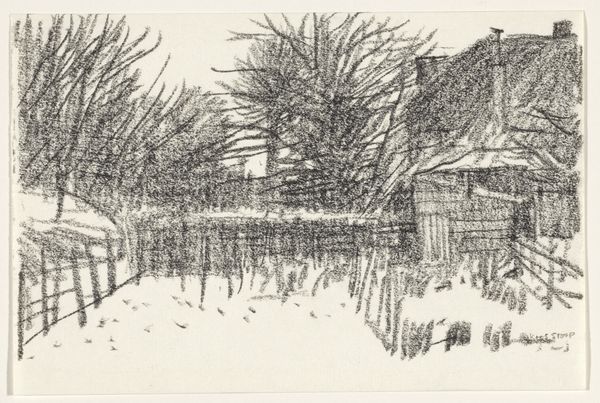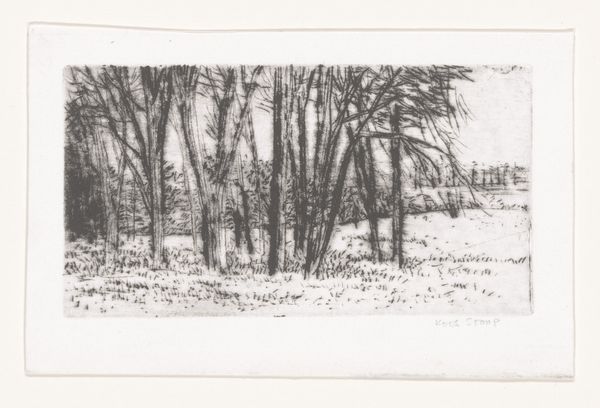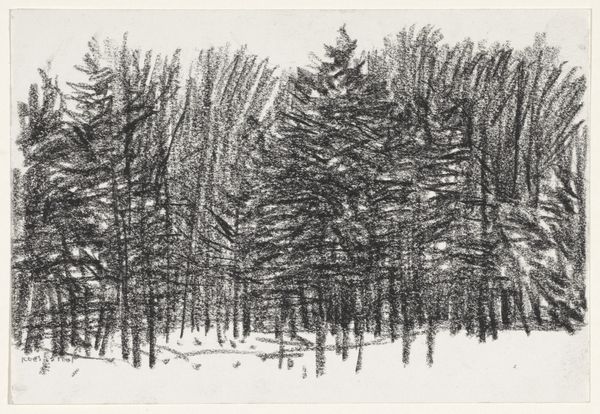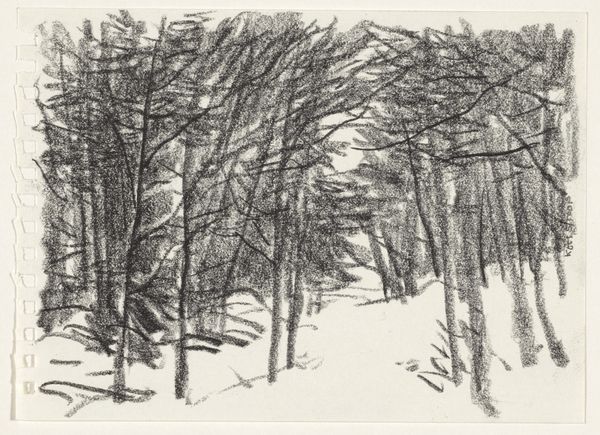
drawing, charcoal
#
drawing
#
landscape
#
line
#
charcoal
Dimensions: height 95 mm, width 160 mm
Copyright: Rijks Museum: Open Domain
Editor: Here we have Kees Stoop’s “Geboomte,” created between 1939 and 2009. It’s a charcoal drawing of trees, currently at the Rijksmuseum. It has this rather stark, almost ghostly feel to it. How do you interpret this work, particularly given its historical context? Curator: That starkness, I think, speaks volumes. The work spans a significant period marked by World War II and its aftermath. Landscape art, often perceived as apolitical, can subtly reflect anxieties about land, ownership, and national identity. Consider the way the trees are rendered. Do you see fragility, perhaps a sense of being uprooted? Editor: Yes, now that you mention it, there is a sense of impermanence to their forms. They're not these grand, stable oaks, but something more vulnerable. Curator: Exactly. And Stoop's choice of charcoal, a medium easily erased or smudged, further emphasizes this vulnerability. The line work contributes to a sense of anxiety or tension. Think about how the landscape in 1939, on the eve of war, would have been loaded with unspoken fears, and how the long period until 2009 implies ongoing feelings. What do you feel Stoop is subtly implying through his particular vision of landscape? Is it purely aesthetic, or something more? Editor: It’s making me reconsider landscape art, to think about how it might communicate anxieties indirectly. Maybe art isn't separate from social or political feelings? Curator: Precisely! It’s a powerful reminder that art doesn't exist in a vacuum. Examining it through the lens of its time allows us to understand deeper narratives about societal concerns. Editor: I'll definitely be looking at landscapes differently from now on. Thanks for shedding light on the historical and social undercurrents.
Comments
No comments
Be the first to comment and join the conversation on the ultimate creative platform.
